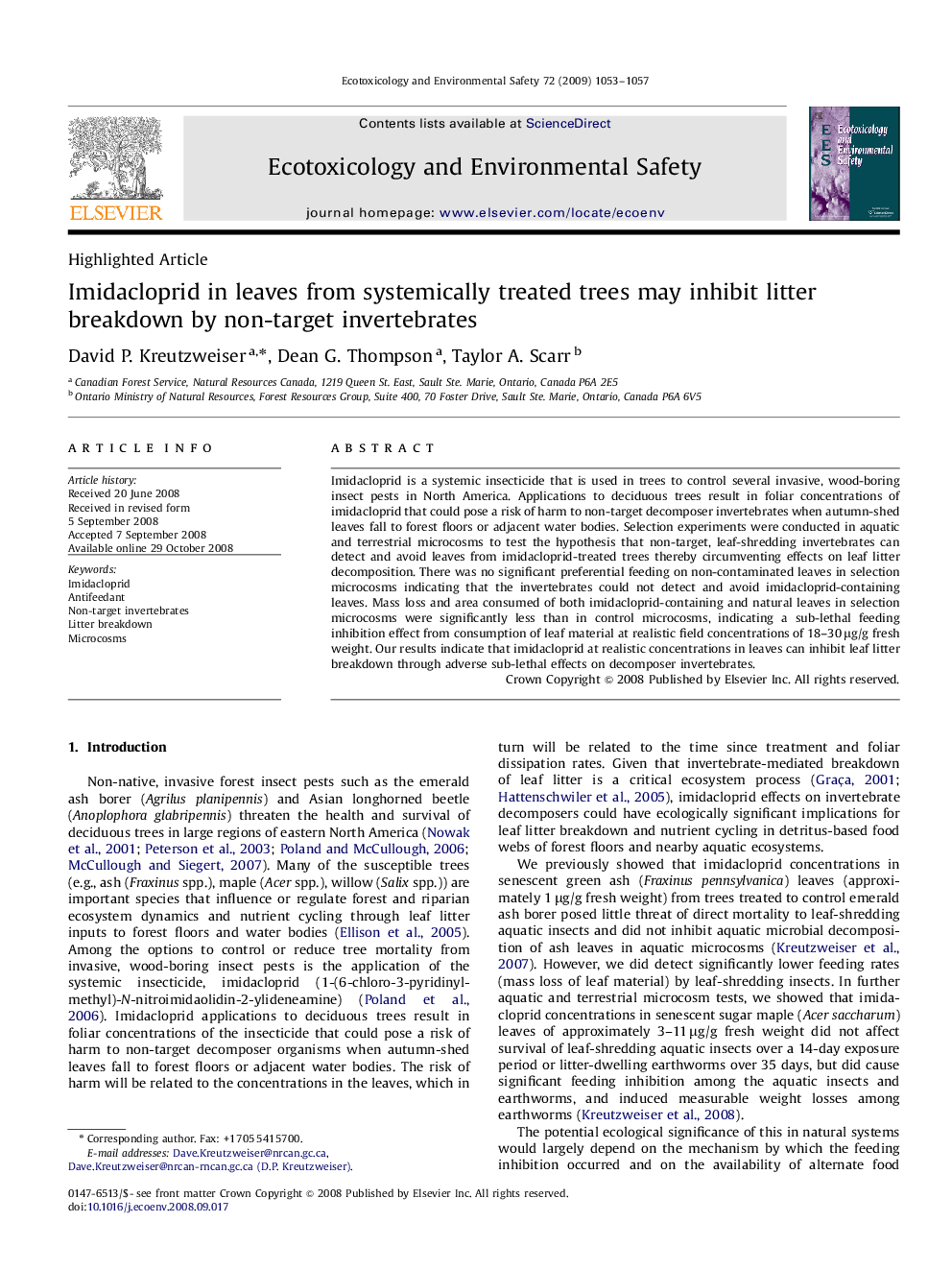| Article ID | Journal | Published Year | Pages | File Type |
|---|---|---|---|---|
| 4421948 | Ecotoxicology and Environmental Safety | 2009 | 5 Pages |
Imidacloprid is a systemic insecticide that is used in trees to control several invasive, wood-boring insect pests in North America. Applications to deciduous trees result in foliar concentrations of imidacloprid that could pose a risk of harm to non-target decomposer invertebrates when autumn-shed leaves fall to forest floors or adjacent water bodies. Selection experiments were conducted in aquatic and terrestrial microcosms to test the hypothesis that non-target, leaf-shredding invertebrates can detect and avoid leaves from imidacloprid-treated trees thereby circumventing effects on leaf litter decomposition. There was no significant preferential feeding on non-contaminated leaves in selection microcosms indicating that the invertebrates could not detect and avoid imidacloprid-containing leaves. Mass loss and area consumed of both imidacloprid-containing and natural leaves in selection microcosms were significantly less than in control microcosms, indicating a sub-lethal feeding inhibition effect from consumption of leaf material at realistic field concentrations of 18–30 μg/g fresh weight. Our results indicate that imidacloprid at realistic concentrations in leaves can inhibit leaf litter breakdown through adverse sub-lethal effects on decomposer invertebrates.
